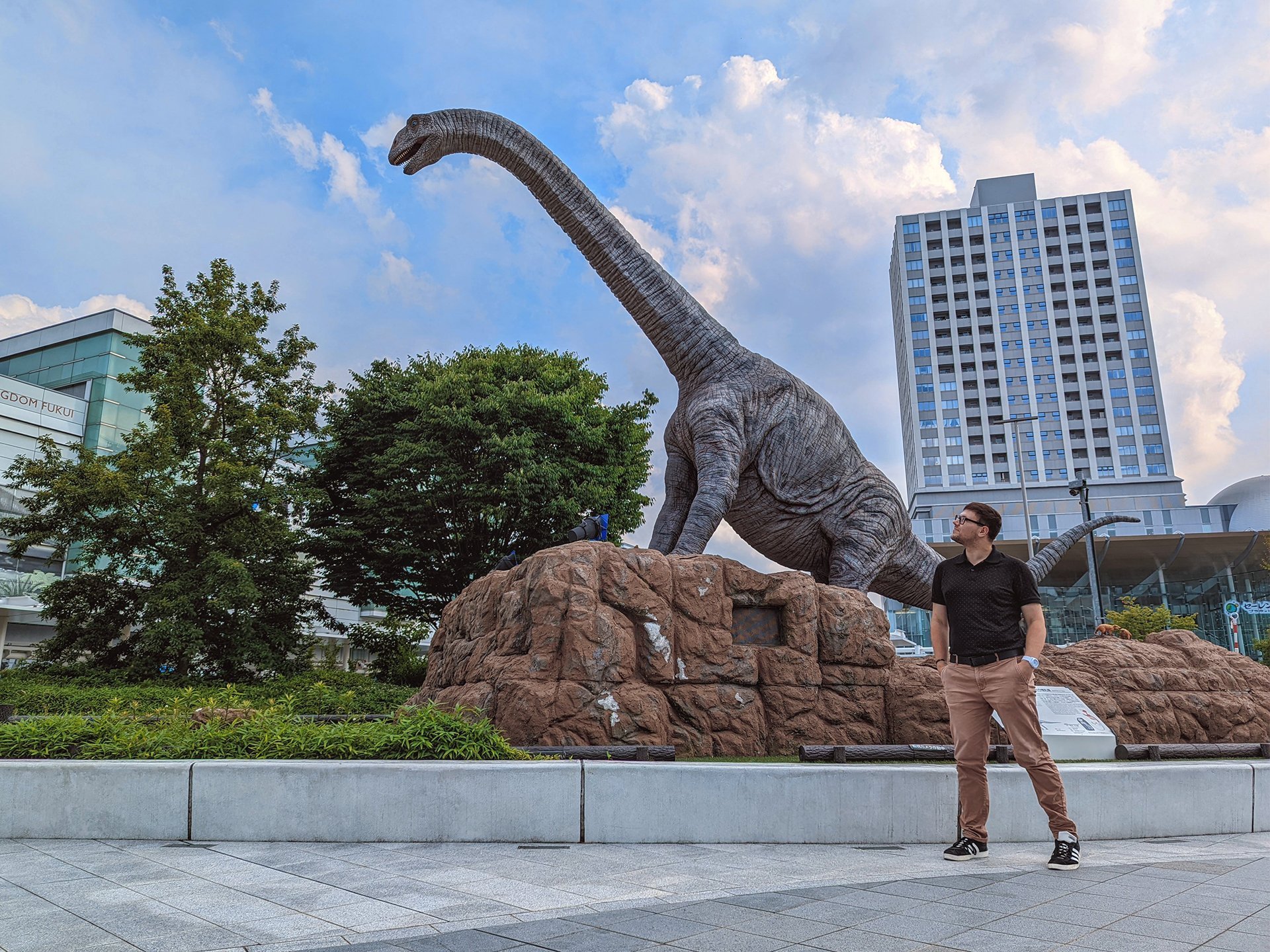Travel Guide: Nagasaki

The historic port city is famous for Chinese cuisine, Christian culture, and anti-nuclear activism.
Cover photo: Posing at Glover Garden, Nagasaki, Japan (2025).
Click on an image above for details.
Intro
From its legacy among Japan’s oldest international ports to the horrific devastation of the atomic bomb, Nagasaki is one of the nation’s most fascinating destinations. The city offers a rich history including Chinese and Christian culture, beautiful architecture, and delicious kasutera cake.
Experience
I had a wonderful time visiting Nagasaki during summer vacation. 2025 marks the 80th anniversary of the city’s bombing and the subsequent end to World War II. The city offers a compelling glimpse into Japan’s history. As a Catholic, I was especially curious to explore Nagasaki’s unique Christian legacy.
I also enjoyed the Nagasaki Port Festival, featuring traditional Chinese dragon boat races and spectacular fireworks over the harbor. Other highlights included strolling through the restored foreign trading post of Dejima, hillside Glover Garden, and the Nagasaki Prefectural Museum of Art, designed by world-renowned architect Tadao Ando (安藤 忠雄).
History of Nagasaki
Nagasaki (長崎) — literally “Long Cape” — began as a fishing village in the 7th century. Violent typhoons prevented Mongolian invasion in the 13th century and, in 1543, similar storms forced ashore Portuguese traders, who helped develop Nagasaki into a flourishing port by 1571.
The Portuguese introduced Christianity and guns, leading to the Oda Nobunaga’s unification of Japan and ultimately the self-isolationist policies of the Tokugawa shogunate. Throughout the Edo period, Nagasaki was the only port open to foreign trade, with foreign residents segregated to the artificial island of Dejima.
In World War II, Nagasaki was devastated by the world’s second atomic bomb, killing as many as 80,000 people. Today, Nagasaki is home to a population of 400,000 and stands as a symbol of peace and anti-nuclear advocacy.
Nagasaki Peace Park & Atomic Bomb Museum
Nagasaki’s most iconic site is the Peace Park, established in 1955 to commemorate the city’s atomic bombing in World War II. Visitors can’t miss the titanic Peace Statue by sculptor Seibo Kitamura (北村 西望). The figure’s raised right hand points to the threat of nuclear destruction, while his left symbolizes tranquility. His right leg is folded in meditation, yet his left is poised for action to defend humanity. It is especially moving to see in person.
Located nearby is the bomb’s hypocenter and Urakami Cathedral, once the largest Catholic church in East Asia. The Atomic Bomb Museum features incredible artifacts, survivor testimonies, and messages of hope. The museum is less crowded than its counterpart in Hiroshima, allowing for a slower and more reflective experience. I was particularly affected by a collection of melted rosaries.
Christianity
Local daimyo Omura Sumitada (大村 純忠) was the first Japanese lord to convert to Christianity, in 1563. He gave control of Nagasaki to Portuguese Jesuits in 1580. They ruled just until ‘87, when shogun Toyotomi Hideyoshi (豊臣 秀吉) began to restrict the religion.
Toyotomi ordered the execution of twenty converted Christians and six foreign missionaries in 1597. They are remembered as the 26 Martyrs. Taking place at Nishizaka in Nagasaki, this event marks the first religious execution in Japan. Both Pope St. John Paul II and Pope Francis have visited the site.
Christianity was formally outlawed in 1614. Christians lead the Shimabara Rebellion in 1637, compelled by religious persecution and heavy taxation. It was the largest-ever revolt on Japanese soil. The failed peasant uprising inspired sakoku (self-isolationist) policy.
Today, just one percent of Japan’s population identifies as Christian — representing over one million people. By concentration, Nagasaki is considered the most Christian city in Japan (4%), following only Tokyo in absolute figures.
Cuisine
It was through Nagasaki that the Portuguese introduced bread, tempura (deep-frying), and kasutera (castella sponge cake) to Japan. I recommend Jiyu-tei Cafe and Teahouse at Glover Garden, which offers castella and drip coffee.
Of course, Nagasaki is also famous for Chinese cuisine, as home to Japan’s oldest Chinatown. Noodle dishes sara udon and champon are especially popular. I also enjoyed Hountei Honten Torifuku, specializing in dumplings.
I recommend making reservations for popular restaurants including Dejima Asa, Kagetsu, and Restaurant Cathedréclat at the new Hotel Indigo.
Events & Seasons
Nagasaki Lantern Festival (Lunar New Year in January/February)
Kanoukaen Fire Festival (late March)
Cherry Blossom Season (March/April)
Nagasaki Port Festival & “Peron” Dragon Boat Races (late July)
Atomic Bomb Anniversary (August 9th)
Spirit Boat Procession (mid-August)
Nagasaki Kunchi Shinto Festival (early October)
Autumn Leaves (October/November)
Transportation & Accommodation
Nagasaki is served by Nagasaki Airport (NGS), located about one hour away, by bus. The city is also easily accessible from Fukuoka (Hakata Station) by train, with the journey taking under two hours.
The downtown area is walkable, with excellent public transportation in the form of buses and trams. I stayed at Nagasaki Bus Terminal Hotel, which offers great convenience for sightseeing. I spent three nights in Nagasaki, but it’s possible to see many attractions in a single day.
Top Attractions
Nagasaki Peace Park & Atomic Bomb Museum
Dejima (restored foreign district)
Glover Garden UNESCO WHS
Twenty-Six Martyrs Museum and Monument
Oura Cathedral (oldest surviving church in Japan) UNESCO WHS
Shinchi (Chinatown) & Sofuku-ji (Temple)
Nagasaki Museum of History & Culture
Nagasaki Prefectural Art Museum (Tadao Ando)
Mount Inasa (famous night view)*
Huis Ten Bosch in Sasebo (Dutch-inspired theme park)*
Gunkanjima / Hashima Island UNESCO WHS*
*I didn’t visit these attractions.
Additional Ideas
The nearest major city to Nagasaki is Fukuoka, which offers convenient access to the entirety of Kyushu island, including the beaches of Itoshima, castle town of Kumamoto, onsen town of Beppu, and lush forests of Yakushima.





























